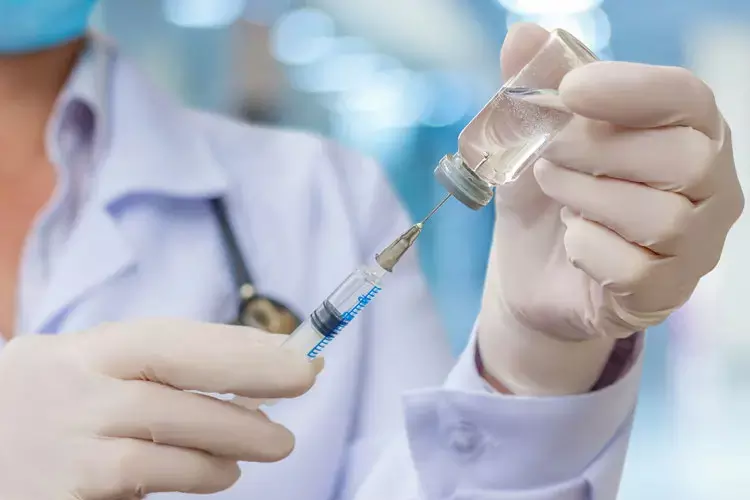- Home
- Medical news & Guidelines
- Anesthesiology
- Cardiology and CTVS
- Critical Care
- Dentistry
- Dermatology
- Diabetes and Endocrinology
- ENT
- Gastroenterology
- Medicine
- Nephrology
- Neurology
- Obstretics-Gynaecology
- Oncology
- Ophthalmology
- Orthopaedics
- Pediatrics-Neonatology
- Psychiatry
- Pulmonology
- Radiology
- Surgery
- Urology
- Laboratory Medicine
- Diet
- Nursing
- Paramedical
- Physiotherapy
- Health news
- Fact Check
- Bone Health Fact Check
- Brain Health Fact Check
- Cancer Related Fact Check
- Child Care Fact Check
- Dental and oral health fact check
- Diabetes and metabolic health fact check
- Diet and Nutrition Fact Check
- Eye and ENT Care Fact Check
- Fitness fact check
- Gut health fact check
- Heart health fact check
- Kidney health fact check
- Medical education fact check
- Men's health fact check
- Respiratory fact check
- Skin and hair care fact check
- Vaccine and Immunization fact check
- Women's health fact check
- AYUSH
- State News
- Andaman and Nicobar Islands
- Andhra Pradesh
- Arunachal Pradesh
- Assam
- Bihar
- Chandigarh
- Chattisgarh
- Dadra and Nagar Haveli
- Daman and Diu
- Delhi
- Goa
- Gujarat
- Haryana
- Himachal Pradesh
- Jammu & Kashmir
- Jharkhand
- Karnataka
- Kerala
- Ladakh
- Lakshadweep
- Madhya Pradesh
- Maharashtra
- Manipur
- Meghalaya
- Mizoram
- Nagaland
- Odisha
- Puducherry
- Punjab
- Rajasthan
- Sikkim
- Tamil Nadu
- Telangana
- Tripura
- Uttar Pradesh
- Uttrakhand
- West Bengal
- Medical Education
- Industry
IVIG Alone Is as Effective as IVIG Plus Aspirin in Kawasaki Disease: JAMA

Researchers have discovered in a new study that high-dose aspirin does not significantly enhance coronary artery outcomes in children with Kawasaki disease (KD) when it is added to routine IVIG therapy. The study found IVIG alone to be noninferior to the combination of IVIG and high-dose aspirin for the prevention of coronary artery lesions (CALs) in affected children. These data contradict the long-standing tradition of incorporating high-dose aspirin in initial treatment and indicate that IVIG alone is enough for acute-phase therapy in KD. The study was conducted by Ho-Chang and colleagues published in JAMA Network Open.
Kawasaki disease is a self-limited inflammatory disease that mainly occurs in children less than 5 years old and is the major cause of acquired cardiovascular disease in children. Standard therapy has traditionally incorporated IVIG with high-dose aspirin in an effort to minimize the risk of coronary artery lesions. Researchers performed a prospective, multicenter, evaluator-blinded, noninferiority trial to compare the outcomes of IVIG alone with IVIG plus high-dose aspirin in children with KD.
The trial was performed in five large medical centers in Taiwan. 134 children less than 6 years of age, diagnosed by the American Heart Association criteria of KD, were recruited from September 2016 to August 2018. Participants were equally divided into two treatment arms: one received IVIG alone (2 g/kg), and the other received IVIG (2 g/kg) with high-dose aspirin (80–100 mg/kg per day) until fever had remitted for a period of at least 48 hours.
Follow-up assessment was conducted at 6 weeks and 6 months after treatment. The researchers assessed the progression of coronary artery lesions as the main outcome measure using the noninferiority margin of 10%. More sophisticated statistical analysis, such as the chi-square tests and repeated measures analysis, were employed for strong data interpretation.
Key Findings
• The last sample consisted of 134 patients, with a mean age of 1.8 years (SD 1.3 years), and 82 (61.2%) were male. The two treatment groups were comparable regarding age, weight, height, and sex distribution.
In the IVIG plus aspirin group (69 patients):
• CALs were present in 9 children (13.0%) at baseline.
• CALs decreased to 2 children (2.9%) at 6 weeks.
• CALs decreased further to 1 child (1.4%) at 6 months.
In IVIG-only cohort (65 children):
• CALs were noted in 7 children (10.8%) at diagnosis.
• CALs decreased to 1 child (1.5%) at 6 weeks.
• CALs increased marginally to 2 children (3.1%) at 6 months.
• There was no statistically significant difference in the incidence of coronary artery lesions between the two cohorts at any of the time points. The 6-week difference in occurrence of CAL in the groups was only 0.7 percentage points (95% CI, –4.5 to 5.8; p=0.65), safely within the noninferiority margin set a priori at 10%.
• Furthermore, no clinically relevant differences in prophylactic or treatment effects were seen, supporting the conclusion that high-dose aspirin was not providing added clinical benefit here.
The study authors concluded that IVIG monotherapy is similar in effect to IVIG plus high-dose aspirin for prevention of coronary artery lesions in pediatric Kawasaki disease. The research emphasizes that the addition of high-dose aspirin is not associated with clinically significant benefit within initial therapy.
Reference:
Dr Riya Dave has completed dentistry from Gujarat University in 2022. She is a dentist and accomplished medical and scientific writer known for her commitment to bridging the gap between clinical expertise and accessible healthcare information. She has been actively involved in writing blogs related to health and wellness.
Dr Kamal Kant Kohli-MBBS, DTCD- a chest specialist with more than 30 years of practice and a flair for writing clinical articles, Dr Kamal Kant Kohli joined Medical Dialogues as a Chief Editor of Medical News. Besides writing articles, as an editor, he proofreads and verifies all the medical content published on Medical Dialogues including those coming from journals, studies,medical conferences,guidelines etc. Email: drkohli@medicaldialogues.in. Contact no. 011-43720751


